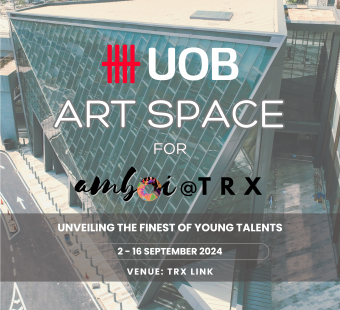The latest global tea craze is the Taiwanese Boba, or bubble tea, and Kuala Lumpur is no exception. Boba joints are popping up all over the city, including our favourite, Black Whale, in SS15.
Boba is just the latest in the long and storied history of tea on these shores. Like all Malaysian cuisine, the simple pleasure of drinking tea in the great city of Kuala Lumpur belies a complex history, filled with migration, trade and cultural mixing.
Luxury in a cup
The Malay word for cup, cawan, from the Chinese for tea cup, hints at tea’s roots in ancient China. So revered was tea to Chinese culture that when Han Emperor, Jing Di, died more than 2,000 years ago, he was interred with a wooden box full of tea in his funerary mound. Today, you can find tea worth 30 times the price of gold. Da Hong Pao tea leaves, the world’s most expensive, can set you back over US$10,000 a pot.
Right here in KL, you can enjoy some of the finest Chinese teas without breaking the bank. One very refined tea house, Tea+ (pronounced “Tea-plus”) at The Gardens Mall, specialises in artisanal brews, with evocative names such as Imperial Dragon Well Long Jing and White Rooster’s Crest, that elevate tea drinking into an artform.
Tea+ is part of the Purple Cane Group, and it’s worth going for the full experience at the original Purple Cane tea house along Jalan Panggong, in operation since 1987. Traditional pu’er and oolong teas are available alongside more exotic blends, like rose and lychee teas.
If you really want to splash the cash, the Purple Cane group also owns Malaysia’s first online tea bazaar, TeaX, where you can find tea leaves fit for the Emperor of China!
Milky innovation
Another thread in the interwoven tea tradition found in Malaysia comes from India via British colonialism. Tea in India is often portrayed as a British invention, but the real roots lie in its eastern province of Assam. The British exploited the indigenous tea leaf and scaled it up into a production of modern proportions. They then mixed the beverage with milk, and circulated it throughout India and the world over. By the 19th century, Indian black tea (known as red tea in Chinese) became the global standard bearer for all tea outside the Chinese-speaking world.
To this day, tea remains the national beverage of the UK, with over 100,000,000 cups drunk every day. Here in KL, you can still enjoy a classic English High Tea. Whether your tastes run to the decadent or twee, there’s something for you somewhere in the city.
The glorious High Tea at the Orchid Conservatory of the Majestic Hotel is a dreamy extravagance that’s hard to beat. Twining’s premium teas, crumbly scones, dense fruitcake and delectable French pastries are served amidst hundreds of blooming orchids set in a faux-greenhouse that lights up like a translucent lantern, creating a truly Occidentalist fantasy.
However, our favourite is the cosy Miss Ellie Tea House, located along a quartz ridge in Taman Melawati. Justin Wong, one of the friendly owners of this family-run establishment, tells how the café started off as an English-inspired tea house, but has since become more localised and experimental, earning the loyal patronage of neighbourhood customers. Much of the ingredients come from local farms, including Justin’s discovery of fig-leaf tea from Pahang, an off-menu specialty best paired with the flavours of their pandan-infused kuih lapis.
From India to Malaysia
Back in India, locals came up with lots of their own delicious variations to English-style tea. The best-loved is, of course, the masala chai, a spicy, milky tea that is the perfect balance of sweet and bitter.
In KL, stop by in Brickfields, where you will be spoilt for choice when it comes to this quintessential Indian beverage. We recommend you have a seat at the local’s favourite tea haunt, Chat Masala, on the main road of Jalan Tun Sambanthan.
Run by a fifth-generation restaurateur whose family began a successful eatery in Lebuh Ampang, the excellent masala chai here is available alongside equally excellent Indian food. Pair your chai with the ‘cocktail thosai’ – a mixed platter of mini-thosais in assorted flavours of fenugreek leaves, carrot, tomatoes and caramelised onions. This combination demonstrates that tea can be equally good with savoury treats.
If you’re in a rush, you can still enjoy a delicious chai courtesy of your friendly neighbourhood chaiwallah - itinerant tea stalls-on-wheels that move around the area. Tea Thambi, and its young proprietor, Kavi, sells around 300 to 400 cups a day.
Kavi has been getting widespread media attention of late due to his entrepreneurial spirit, but few have mentioned how good the tea actually is! Tea Thambi’s masala chai recipe has a milder hint of spices, and the blend is a big hit. At around 3.00pm every day, a small crowd gathers in front of Public Bank on Jalan Tun Sambanthan, alongside cars parked by the roadside, with people of all backgrounds jostling for a taste of Kavi’s tea.
In the heart of Chow Kit, is Restoran Kudu, where the teh tarik is authentic and addictive. This mamak restaurant, now run by Nazrul Noordin, the grandson of its founder, has been in operation since 1969. It is famous for having been P. Ramlee’s favourite place to have tea, and, being a Penangite, his regular dose of sinful nasi kandar. Unsurprisingly, Kudu originates from the older Kassim Nasi Kandar in Georgetown, Penang.
The teh tarik here retains the traditional style that first made the drink a Malaysian classic. It uses a fragrant Ceylonese tea and is only mildly sweetened by condensed milk, which is then topped with a dash of evaporated milk. If you’re looking for a lighter refreshment on a sunny day, Kudu also does an excellent ‘Teh O Ais Limau’ (ice lime tea) using the same Ceylonese tea paired with halved calamansi fruits for another Malaysian crowd pleaser.
---
Photo source:
Slider 2: https://www.majestickl.com/






